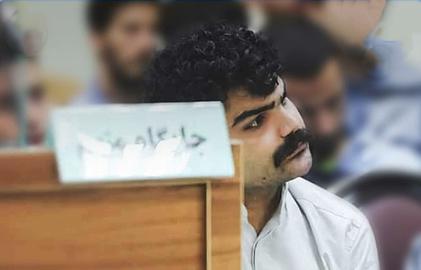It was around noon on a sweltering Tehran summer day. I had called the local taxi service for a ride to somewhere in north Tehran, and the driver who turned up was middle-aged, his voice scratching from too many cigarettes. He drove a Pride, a car that is made in Iran and looks vaguely like something children should be playing with. As we waiting at the stoplight, a Porsche pulled up alongside us. The driver was young man wearing a blue T-shirt, which did not hide the tattoos along his left arm.
My taxi driver eyed him, swore under his breath, and called out across traffic: “You jackass, where did you get the money to get this car?”
The light turned green and the traffic moved, but the driver’s frown stayed put for the rest of the ride.
For those living in Tehran, the class divide is apparent every single day, and Tehranis don’t need the rich kids to publish their glamor shots on Instagram in order to gauge just how differently the elite live.
Anyone who has been in Tehran’s traffic jams 500 times will have noticed this, just by comparing cars stuck behind the lights. Conspicuous consumption and over the top luxury have become hallmarks of Iranian society in the fourth decade of the Islamic Revolution, a revolution that started by promising justice and free bread for all.
“The class divide in Iran is a direct result of state monopolies,” Javad, a professor at Tehran University, tells IranWire. He believes that contrary to popular belief, the roots of a phenomenon like Tehran Rich Kids is found in the feverish day of the revolution. “Nationalizing the Iranian economy in the early days of the revolution had no other result other than creating numerous economic monopolies for the revolutionaries and their dependents,” he explains.
"When all the power in a country is concentrated among a select elite, this leads to a huge amount of red tape in the bureaucratic system," says Santhosh Srinivasan, a research coordinator for Transparency International. "When there’s curtailment of the market for whatever reason, it leads to bribery and extortion and the only people who benefit are those who are in the network of power and have those connections. Ordinary entrepreneurs are faced with heavy red tape and extortion and end up dropping out of the economy altogether."
The weakness of the private sector is also to blame. “In the 1980s the private sector was unable to import or export without government approval and the newborn government only trusted its own dependents,” a Tehran-based economic reporter tells IranWire.
Regime stalwarts like businessman Asadollah Asgaroladi and prominent official Mohsen Rafighdoost – both of whom rose from working-class obscurity to become veritable tycoons – show just how monopolies benefited people trusted by the revolutionary government. Rafighdoost was first the driver of and then chief of security for Ayatollah Ruhollah Khomeini and is now one of the richest men in Iran. Asgaroladi received a trade license that enabled him to buy hard currency at an artificially low price. His wealth is estimated to be over $9 billion, making him the second wealthiest man in Iran.
A New Gang
“When the [Iran-Iraq] war was over, it was clear that a new gang had the final word in the economy,” Mohammad, a middle-aged bazaar merchant and a religious man, tells IranWire. His comment refers to individuals who secured scarce licenses to import goods that no one else was permitted to import and could buy ridiculously cheap dollars even in the 1990s, when the country was in the midst of a severe currency crisis.
“It seems people have forgotten that the first luxury Mercedes cars were imported by members of the parliament,” says Mohammad. He remembers how in those days, in automobile showrooms in Tehran, just the licenses to import cars themselves were selling for a few times the price of a domestically made Peykan car. “When the government took over the market, it did it for its own guys, not for ordinary people.”
One of the core contradictions facing the Islamic Republic is the now starkly obvious incompatibility between the revolutionary masses who believe in justice and the economic interests of traditional groups such as bazaar merchants. The revolution declared consumerism a manifestation of corrupt Western culture and a cause of Iranian dependency on the West. So it started out by fighting against the symbols of consumerist culture.
Hosseinian is a retired manager of a private factory and earned good money before the revolution. He bought only the best, including a brand new green Mercedes, which he purchased a couple of years before the revolution.
A year later, driving the Mercedes made him a representative of decadent capitalism and an agent of imperialism in the eyes of the revolutionaries, and then the workers of his factory. In the early days of the revolution, he hid his car at his house so nobody would see him driving it. The troubles followed quickly after the early furor of 1979.
“In those days the revolutionary committees stopped expensive cars and confiscated them,” he says. “Young members of the revolutionary committees in Tehran were unbelievably attracted to Mercedes cars. Until ‘83 or ‘84 if you came across a Mercedes in Tehran, you could be certain that the Revolutionary Court people were using them.”
Hosseinian’s Mercedes did not escape this fate. “They told me I should thank God that they were not taking me as well,” he says. And he still remembers those days when he saw revolutionary committee members driving his cars on the streets of Tehran.
Behind a Simple Façade
When the Iran-Iraq war was over, the regime slogan “Live Simple” was at its height. Images of Iran’s leaders showed them living like ordinary people. But behind this simple façade, black market and sweetheart hard currency deals were making fortunes for people with access to the establishment who were beyond the reach of law. The government of President Akbar Hashemi Rafsanjani started what was called the “Development Era”.
According to Javad, extralegal activities in the Iranian economy entered a new phase in the 1990s. “Everybody knew that those involved in the development projects were not necessarily honest but the regime agreed to pay them for their work,” he says. “If, under the Shah, people used to complain about the impudent behavior of the nouveau riche, now they saw that the Islamic Republic nouveau riche believed they owned the country.”
"What we see with autocratic regimes is basically a lack of transparency, with power being held in the hands of a few," says Transparency International's Santhosh Srinivasan. "Ordinary citizens have very little recourse to deal with the problems they face in everyday life, and this is also true for businesses. And, often, when an ordinary person questions these policies around business or transparency, they are persecuted. Also, because there is such strict control on the media in a country like Iran, citizens can’t access information they need to deal with corrupt business practices or other injustices. And those responsible for dealing with dealing with these failures – the police, the judiciary – are caught within this non-transparent system too, so they can’t be effective."
Ghazal, who in the 1990s ran a travel agency, noticed a change in her clientele in those years. Those who wanted to travel to France were no longer secular urban families. “Wives of the hajis called to buy tickets for Paris and London,” she says. “Then their chauffeur would come, pay the money and pick up the tickets.” Whereas once only secular middle class and elite families traveled, the families of government officials became her main clients.
In the early 2000s, the military stepped into the economy as well. The Revolutionary Guards discovered that their military organization could function like a guild and protect its leadership’s extralegal common interests.
“These gentlemen have no idea about costs,” says Mohammad, a third-generation bazaar merchant, speaking about his dealings with these Guards commanders. “It seems that they do not recognize that other people must repay their bank loans and must control their costs.”
He uses a term that during the war with Iraq was a badge of honor: “It looks like the Guards are no-holds-barred in business as well.”
The presidency of Mahmoud Ahmadinejad ushered in a new era of financial “anything goes”. “Until Ahmadinejad, the government had at least some rules and accountability,” says an Iranian journalist, “but Ahmadinejad was not about rules and accountability. In order to buy supporters across society he literarily opened the treasury doors to his supporters.”
Mohammad noticed this phenomenon very early on. “Suddenly the bazaar was filled with kids around 20 to 25 years old who all had letters of credit in their pockets.” Liquidity grew fast, but of course not for everybody.
“People hoped and believed that they suffered for a high ideal, not for the kids of the ruling class to show off their expensive watches,” says Rouhani, an American-educated sociologist who lived in Iran in the 1990s and the 2000s and now lives in Canada. He believes that those pressures and deprivations were an important factor in making the people loathe the rich kids.
Today Iranian people can see that the one percent is indeed real. Rouhani believes that the Instagram page Rich Kids of Tehran is actually a manifesto. “Everybody knew that such people and such lifestyles existed,” he says, “but they believed they were individual cases not a whole class.”
It is no longer this way. The day that Rich Kids of Tehran appeared on the internet, a new class declared its existence. It is a class busy enjoying its wealth, which nobody in Iran believes was earned legally or legitimately.
visit the accountability section
In this section of Iran Wire, you can contact the officials and launch your campaign for various problems




























comments